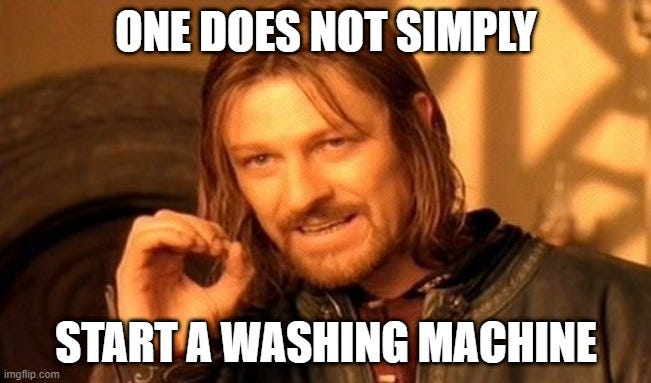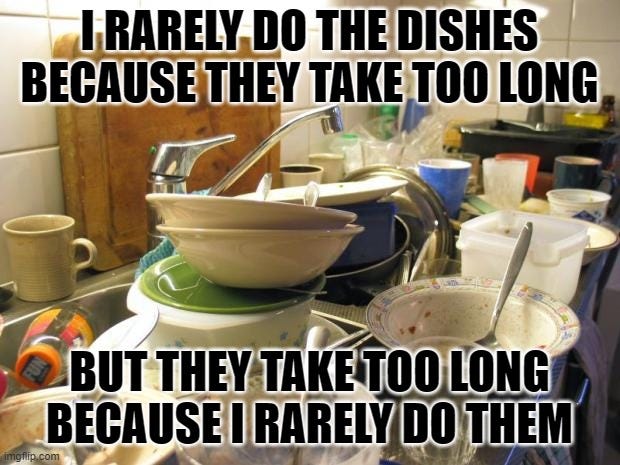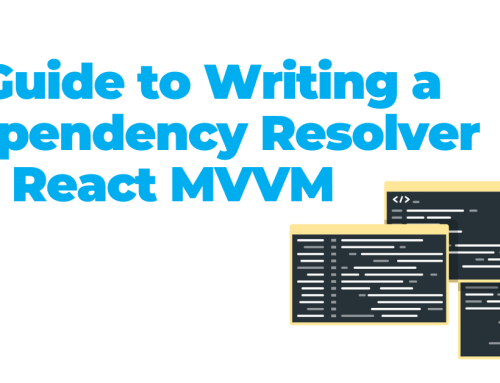Every month, the company I work for, evozon interviews a colleague for our company newsletter. The interview contains a section “This or that” where you choose between different things. When asked to choose between doing the laundry or doing the dishes everyone chose laundry. And that intrigued me because I would choose doing the dishes.
Framing the Question
Of course, being a business analyst, I first needed to qualify the question. I think it’s safe to assume that we’re comparing doing the dishes by hand to doing the laundry using an automated washing machine without a drier.
Working in Agile I also needed to give a “definition of done” for these activities:
- The laundry is done when the clothes are clean, dry, folded, and put back in the closet.
- The dishes are done when they are clean, dry, and put back in the cupboard.
Let’s review the steps involved in the two activities:
Doing the Laundry

- You don’t start the wash machine with one item. Unless you have a 2 year old and she starts it with her doll’s dress #truestory.
- You need to have enough same colored clothes to start the load.
- If you have too many clothes, you have to choose which ones you’ll include in this load.
- Once you start the wash cycle you cannot add more clothes in the machine.
- When the cycle is done, you hang the clothes out to dry, then you fold them and put them back in the closet.
We consider ironing out of scope. 🙂
Doing the Dishes

- You can start washing the dishes as soon as there is at least one dish to wash. You don’t have to wait to have “enough dishes” to start washing.
- You can wash any dish, in any order, dry it and put it back in the cupboard. You don’t have to wait for all the dishes to be washed before using the dish you washed and dried.
- You can add new ones while you’re washing. And there’s always one, isn’t there? 🙂
- When you finish washing the dishes you dry them and put them in the cupboard.
How is this all related to SCRUM and Kanban? Well, when thinking of these steps it struck me that doing the laundry is a lot like SCRUM and doing the dishes like Kanban.
How Doing the Laundry is like SCRUM
- You first have to plan your sprint items (machine load) to match your sprint (machine) capacity.
- The capacity is limited, so you have to prioritize what you can fit in the sprint (machine). Either a couple of large items (bedsheets) or multiple smaller items (clothing).
- Once you start the sprint (wash cycle) you cannot add items to it.
- You get your demo (washed clothes) at the end of the sprint (wash cycle).
How Doing the Dishes is like Kanban
- You can start working as soon as you have at least an item (dish).
- You can take an item (dish) through all necessary steps to complete the work (doing a dish) before moving to the next item (dish).
- You can change your work in progres limit to fit all items in a step (wash all the items with soap) before moving them to the next step (rinse and dry them). Although Kanban discourages large WIP limits.
- You can quickly start work on a new item (washing a new dish) even if you had other items in the backlog (dishes in the sink).
Scrumban?
Should I conclude that my colleagues prefer doing the laundry because they prefer SCRUM? If that’s the case, they can always turn doing the dishes from Kanban to SCRUM by buying a dishwasher. 🙂
And if they find a new dish while the dishwasher is running…they can always go Kanban for that dish. 🙂
What do You Prefer?
I would love to hear your opinion:
- Do you prefer doing the laundry or the dishes? Why?
- Are they really like SCRUM and Kanban or not?




